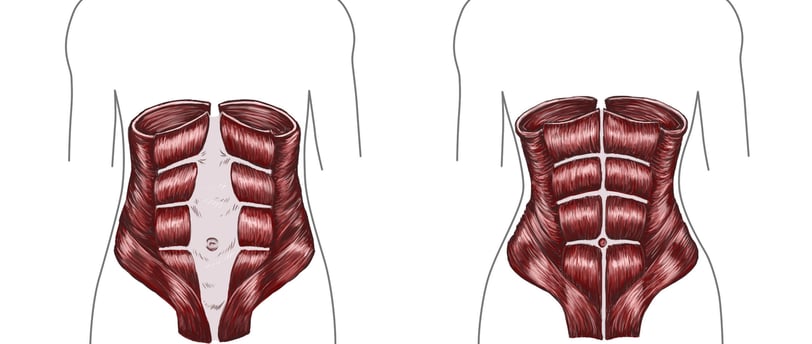
Diving into Diastasis Recti (Mom's version)


So you get pregnant… maybe you planned it, maybe you had to work really hard for it, maybe it surprised you (been there). Regardless of how you got here, your body is about to undergo some truly dramatic changes in what feels like forever, but is actually a very short amount of time. The transformations your body undergoes to nurture and bring forth new life are nothing short of a MIRACLE—a miracle that deserves a lot of attention, understanding, and care. And at the heart of this journey lies a concept that every expecting and postpartum mom should familiarize herself with: diastasis recti. Wondering what on earth that means? Keep reading.
You start off looking cute, perhaps a bit bloated, but you’re pregnant so it’s, right? As the months roll by, your belly takes center stage, growing to accommodate the precious life within. During this process, something happens—your abdominal muscles stretch and separate. It's what we affectionately call diastasis recti.
Here's the thing: this separation is entirely normal and happens to all of us by the end of our pregnancies. Some of us end up with a lil’ valley down the middle of our bellies, while others might look (and feel) like Moses just parted the Red Sea (yep, it can be that noticeable). But whether the gap is big or small, an unaddressed diastasis can bring its share of challenges. Here's a glimpse of why it matters:
Trunk Weakness and Instability: Diastasis can compromise your core strength and stability.
Posture Challenges: Maintaining good posture becomes a bit trickier.
Back Pain and Kinetic Chain Issues: It might contribute to back pain and a range of other kinetic chain problems.
Visible "Dip" or "Bulge": You might notice a dip or bulge along the midline of your belly.
Stubborn Bloating: That postpartum bloated feeling can linger.
Diastasis recti is natural and, in a way, necessary to make room for your growing baby. However, living with an unhealed diastasis (and its consequences) is far from necessary. Improving it can significantly enhance your quality of life, and I wholeheartedly believe that every mom deserves that. If you're struggling to regain your core strength, battling chronic back pain, or frustrated by how your belly looks months or even years after giving birth, there's a solution for you!
The first step in healing diastasis recti is mastering the art of managing abdominal pressure by breathing correctly. There are so many great ways to work on your breathing. Once you've conquered these breathing exercises, the next step involves addressing the issue with targeted corrective exercises. Ultimately, any program designed to heal diastasis recti should leave you feeling stronger, functional and more confident in how your body.
It's essential to understand that, in some cases, the abdominal muscles may not fully return to their original position, and that's OK! What truly matters is feeling confident in your functionality and appearance. In rare, severe cases, surgery might be necessary, but corrective exercise is always the first line of deferense. No fitness or health professional should guarantee that your post-baby belly will look exactly the same as it did before pregnancy. It CAN, and maybe it will, but sometimes it won't. Yet, you can unquestionably regain or exceed your pre-baby strength and functionality.
